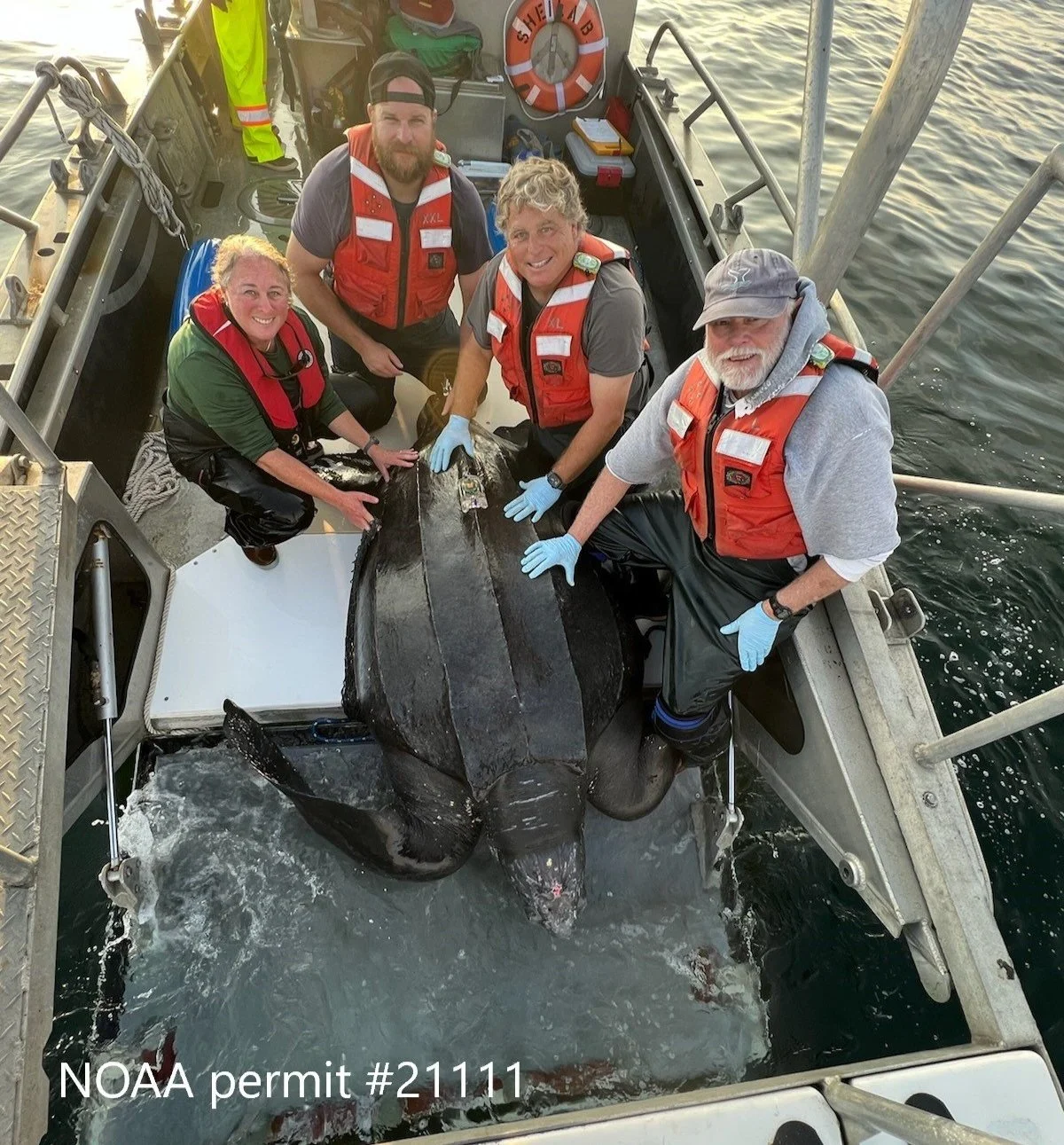Nerea Lezama-Ochoa is a marine biologist from the Basque Country (Spain), working as a UCSC project scientist at the National Oceanic and Atmospheric Administration (NOAA), Environmental Science Division (ESD) in Monterey. Her team is producing daily projections of suitable habitat for 10 highly migratory species (including leatherback sea turtles). Her main research interests are ecological modeling, spatial ecology, oceanography and ecosystem-based management approaches for the conservation of marine top predators. She understands marine conservation as a way of life.
During the last two years as a postdoc at UCSC-NOAA Monterey, I have been learning about the ecology of one of the most threatened species in the California Current (CC), the leatherback turtle (Dermochelys coriacea). During my PhD, I studied bycatch in tropical fisheries and gained first-hand knowledge about the threats that leatherbacks face on a daily basis. My trips to Baja California, Mexico to do fieldwork during my postdoctoral career got me involved for the first time in research on marine turtles in the Gulf of California. Since then, marine turtles have become one of the most interesting species to me due to their migratory patterns, fidelity for forage areas, and vulnerability to fisheries and climate change.
Here in Monterey, I had the opportunity to analyze tracking data collected by Scott Benson (NOAA Southwest Fisheries Science Center) over many years to update and improve an original leatherback turtle model created by Heather Welch in 2019 (Welch et al., 2019) that provides predictions on when and where leatherbacks will be present in the California Current using Species Distribution Models (SDMs). The algorithm of this model makes its predictions using data from the satellite tracks of tagged leatherbacks paired with environmental factors to show areas where ideal leatherback habitat is expected to be. This kind of model can be used by resource management to inform their decision making to help protect leatherbacks. Since 2018, NOAA and Upwell’s vessel-based tracking team have continued to tag leatherbacks, collecting further data that could improve the model. The incorporation of new tracking data allowed us to validate the original model and better predict foraging areas when leatherbacks return to the California waters during summer and fall.
Members of the Upwell and NOAA collaborative monitoring team with one of the tagged leatherbacks that contributed to the data set Nerea worked with. From left to right: Dr. Heather Harris, DVM, Garrett Lemons NOAA-SWFSC, Dr. George Shillinger, Upwell Executive Director, and Scott Benson NOAA-SWFSC.
To be sure that the model performs well and is predicting important habitat areas correctly, we validated it by holding out testing data. “Held-out” testing data can be a specific year, area or subset of the dataset that is not used to train the predictive model, so it can later be used to test the model’s accuracy. We validated our model for different years to ensure that we can trust its predictions year by year, by latitudinal areas (north versus south) and by longitudinal areas (offshore areas versus inshore). Following these multiple validations, we have confidence in the model’s ability to predict where suitable leatherback habitat will be in California waters both historically and in the future.
Historical predictions were made for 1981-2021, and are important to understand where leatherbacks may have been historically found. Future projections were made for 1980-2100, and are important to identify areas that leatherbacks may inhabit in the future under the influence of hypothesized changes to environmental conditions. Our new model that included the new tracking data performed better than the previous model, and future studies will use the predictions of suitable habitat generated from the new model to identify where this species’ habitat may shift in the future. Below are example projections of suitable leatherback habitat made using the GFDL Earth System Model.
Projected suitable habitat averaged for the historical period (1985-2015).
Projected suitable habitat averaged for the future period (2070-2100)
Working on this project gave me the opportunity to engage with scientists and ecologists who have been studying this species for more than 20 years, and to track how leatherback populations have been decreasing due to fisheries bycatch and changing environmental conditions. The opportunity we have as a group to be involved in the entire research process, from fieldwork to processing and analyzing data, has given me insight into the huge effort undertaken to conserve this species. The data have been very challenging to obtain (traveling to remote locations, local weather conditions hindering survey and tagging efforts, technical problems or tags failing to report or deploy, etc.), and it is gratifying to see how the outputs of our modeling project will be a valuable source of information to support conservation and research efforts for endangered leatherback sea turtles in the Pacific Ocean.
References:
Welch, Heather, et al. "Decision‐support tools for dynamic management." Conservation Biology 34.3 (2020): 589-599.





